Mesozoic plate margin activity, Antarctic Peninsula

The Antarctic Peninsula saw the deposition of marine mudstones and sandstones, as well as some extensive volcanic rocks, during the Mesozoic Era. These rocks were intruded by granite which forms the backbone of the Peninsula, and were metamorphosed. To the east of the Peninsula, highly fossiliferous Cretaceous mudstones and sandstones were deposited. |
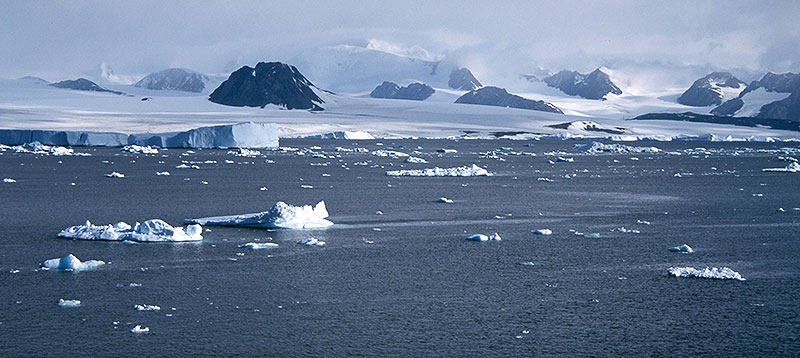 Late Palaeozoic metamorphic rocks, referred to as the Trinity Peninsula Group, form the backbone of the northern Antarctic Peninsula. Although largely buried under the Antarctic Peninsula Ice Sheet, good exposures occur in nunataks, such as these at the edge of the Detroit Plateau, as viewed from Prince Gustav Channel. | 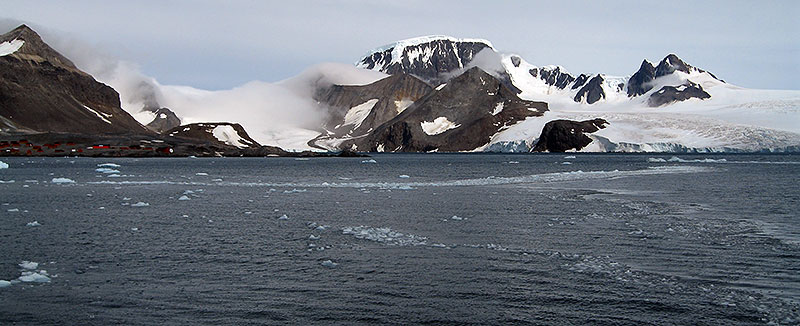 General view of mountains comprising the Trinity Peninsula Group near Argentina’s Esperanza Station, Hope Bay, Antarctic Peninsula. | 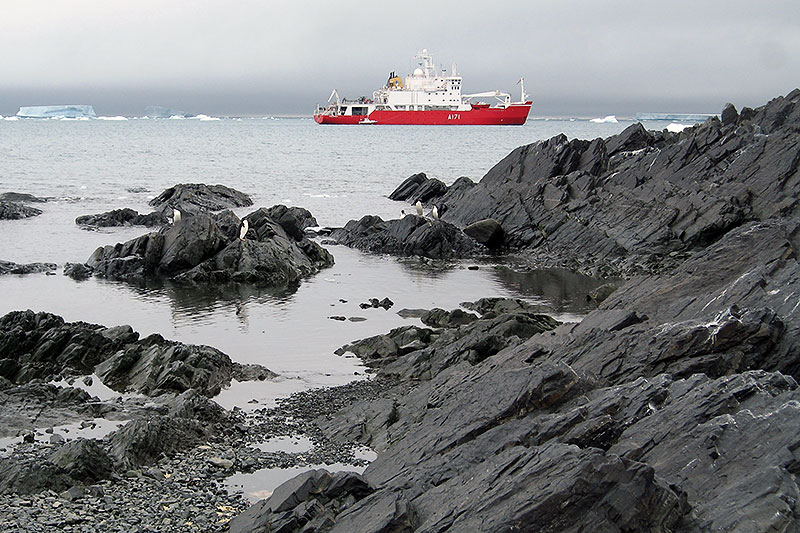 Marine sandstones and turbidites of the Trinity Peninsula Group (inferred Permo-Carboniferous age), Esperanza Station (Argentina), Hope Bay, Antarctic Peninsula. HMS Endurance in background. | 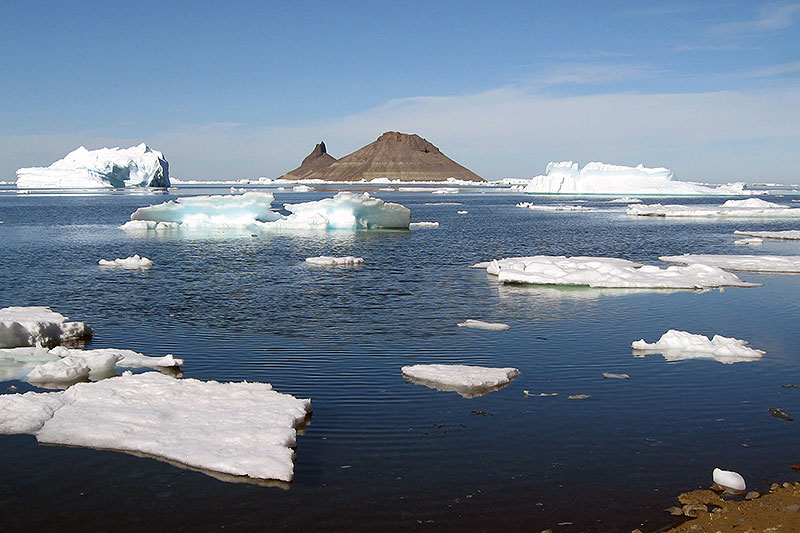 Humps Island, off the NE coast of James Ross Island, comprises Cretaceous sandstone and mudstone, capped by craggy Neogene volcanic rocks. |
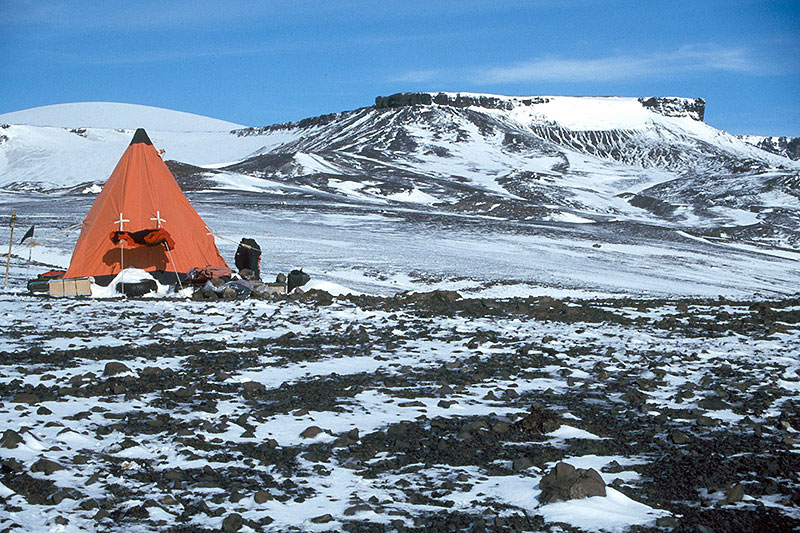 British Antarctic Survey camp on Cretaceous mudstone and sandstone, which extends across the landscape as far as the summit cliffs, where Neogene volcanic rocks cap the sequence. The soft nature of the Cretaceous rocks and easy erodibility gives rise to few clear exposures. | | | |